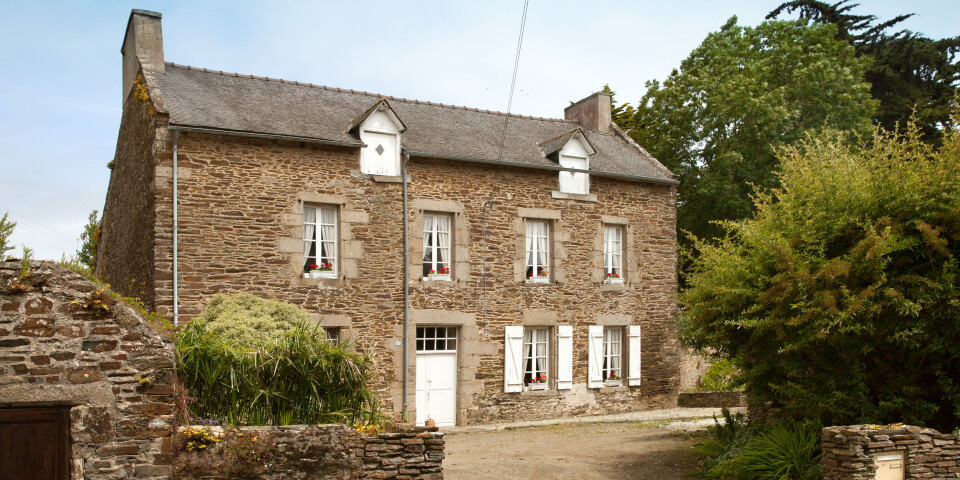-
Eat like a local - Dragées de Verdun
Explore the rich history and craftsmanship of Maison Braquier, the last French company producing traditional sugared almonds, a beloved delicacy in Verdun since 1783
-
Slake your thirst at Verdun's beer museum
Explore Verdun's beer museum, plus enjoy a unique dining experience
-
Learn to master AI, not fear it, says Toulouse lecturer
Ethics lecturer Guillaume Massol of the University of Toulouse says the capacity to adapt is our true strength
'Tomatologue' spends 25 years reviving old varieties
Eric Pedebas who lives in the Hérault, has spent 25 years experimenting with 4,000 varieties in his quest to find the perfect tomato, making a business out of his passion and calling himself a ‘tomatologue’. The Connexion interviews him.

Summer is the season to enjoy sun ripened tomatoes, best eaten straight from the vine. In recent years there has been a revival of ancient varieties so a tomato is not just red, round and shiny but can again be found in a range of shapes, sizes and colours.
What makes one kind of tomato better than others and which are your preferred varieties so far?
The tomato is a fruit and what I look for is plenty of flavour but with a mildness and a sweetness as I don’t like my tomatoes to be acidic. I remember what tomatoes tasted like from the garden when I was a child.
Little by little modernity and industrialisation has meant taste has disappeared.
Now I am trying to bring it back and find the best ones to grow.
One of my favourites is the Ananas Noire. It is a big tomato which has a strange beauty in its colours which can go from green to dark red and through several yellow tones on the outside. Inside it has a green and yellow marbled colour. Its taste is exceptional and like a good wine you still have the taste on your palate 30 minutes after eating it.
Another favourite is the heart shaped Orange Russe which is firm, juicy and delicious. Finds like this are worth all the seed experiments.
Finally, the Moya which is a beef tomato which is particularly liked by the local top chefs because its taste is perfect, its flesh is firm and moist and it has a deep red colour.
Out of the 4,000 varieties you have grown how many have been good?
I am very difficult to please, a perfectionist and I would say there are between 2 and 3,000 types of tomato I have grown that are not good enough to sell. Just because a variety is not a modern hybrid but une tomate
ancienne doesn’t mean it is good.
This year I am experimenting with 200 new varieties and 50 that are already tested. I am also growing 10 new hybrids that are sold in the shop as “ancienne” varieties.
Because the public are now aware of the range of different kinds of tomatoes available and are attracted to varieties that aren’t red and round supermarkets now sell different shapes and colours. But beware, they are often unnaturally shiny and modern hybrids which might not have the same taste as a pure strain.
However, I am putting it to the test and will have to wait until the fruit have formed to see if I am right.
How many more types of tomato are there left to try?
I have a friend who doesn’t grow tomatoes but painstakingly researches and catalogues seeds and plants from all over the world. So far he has collated over 15,000 (www.goo.gl/BhvV74). They weigh from 1g to 1.5kg. The smallest are the size of trout caviar. There are tomatoes which have peach like rough skins. The richness of the tomato world is amazing.
How did you become interested in tomatoes?
It began as a hobby when I tasted the first really good tomato for years from a market stall. I began by swapping seeds with other enthusiasts from all over the world.
I was working as a florist at the time and when I was 45 I felt in a rut so decided to make tomato growing my business. It is just my wife and I so it is a small concern and we work hard. But we have now got a reputation in the area for producing flavoursome tomatoes and the top chefs from Montpellier literally come to my door to collect our produce.
We produce between 8 and 10 tonnes a year. It is a lot of work, I don’t earn a lot of money but I sleep well every night and it is a pleasure when people thank you.
Last year an elderly man came up to me and shook my hand and said he thought his childhood memories of delicious tomatoes must have been a fantasy but now he had discovered that tomatoes were really that good when he was growing up.
You sell both tomatoes and plants, so do you have any tips for gardeners?
They will grow in any type of soil but if you don’t use chemicals, and I don’t, the soil needs to be enriched with animal manure and compost. That will feed the leaves.
The fruit thrives on potash so if you have a wood fire make sure you put some of that ash into the soil.
Another tip is to put bunches of nettles in the bottom of the hole where you are planting. It will create its own nitrogen rich fertiliser.
Tomatoes need sun so don’t plant them in the shade and plant them 40cm apart. Always water in the morning and never in the evening.
Where I am in Maurin-Lattes, south of Montpellier in Hérault we don’t suffer from mildew, but if you are further north make sure you treat plants with Bordeaux mixture after rain.
Two good plants to start with are Prince Noir, which is a small black tomato and the one I give to people who want the taste they remember from their childhood, and Jaune Flamée which produces a lot of fruit and is another medium sized tomato about the size of an apricot.
Buy plants from small producers if possible where you can be sure of the authenticity of the stock. If you can buy your tomatoes from small producers too you are likely to get something with a real tomato taste
Tomato and goat's cheese sushi (for 4)
Ingredients
- Large fleshy tomatoes (Ananas Noire and Ananas Orange in photo)
- Soft goat’s cheese
Method
- Using two cookie cutters, one larger than the other, make tubular shapes from tomatoes
- Stuff them with goat’s cheese
- Put the stuffed tomatoes in fridge to firm up the tomato and cheese before serving
Eric Pedebas' tomato soup (for 4)
FOR Eric Pedebas the best way to eat a tomato is uncooked and freshly picked. However, there are many ways of cooking them, such as this soup:
Ingredients
- 1 big onion chopped finely
- 3 cloves garlic, crushed
- 1kg tomatoes (garden-fresh!) he suggests 500g Maya (plum shape) and 500g Ananas Noire (multi-colour green, yellow and purple beefsteak type tomato)
- 500g white beans
- ½ litre chicken stock
- parsley, salt, pepper
Method
- Gently fry onions and garlic
- Add chopped tomatoes and let them cook for 5 minutes
- Add the stock and cook for 15-20min
- Blend in a mixer
- Add white beans, parsley and salt and pepper to taste
- Simmer for 10-15min
- Serve
Gambas prawns in Cambuci sauce (for 4)
Ingredients
- 400g Gambas prawns
- 6 Andine tomatoes (a large variety ressembling a pepper and suitable for soups and sauces)
- 1 onion
- 5 chillies (Eric uses Cambuci)
- 5 cloves of garlic
- Fresh ginger
- oregano
- parsley
- olive oil
- boulghour/bulgur for 4
Method
- Take off the heads of prawns, split open the back and fry gently with oil, garlic and chopped parsley
- For the sauce, fry chopped onions in olive oil, add the chillies cut into thin slices and leave them to cook for three minutes
- Add tomatoes cut coarsely, garlic, oregano and finely chopped ginger. Cook until reduced to a thick sauce and then add seasoning
- Serve with the cooked boulghour
























